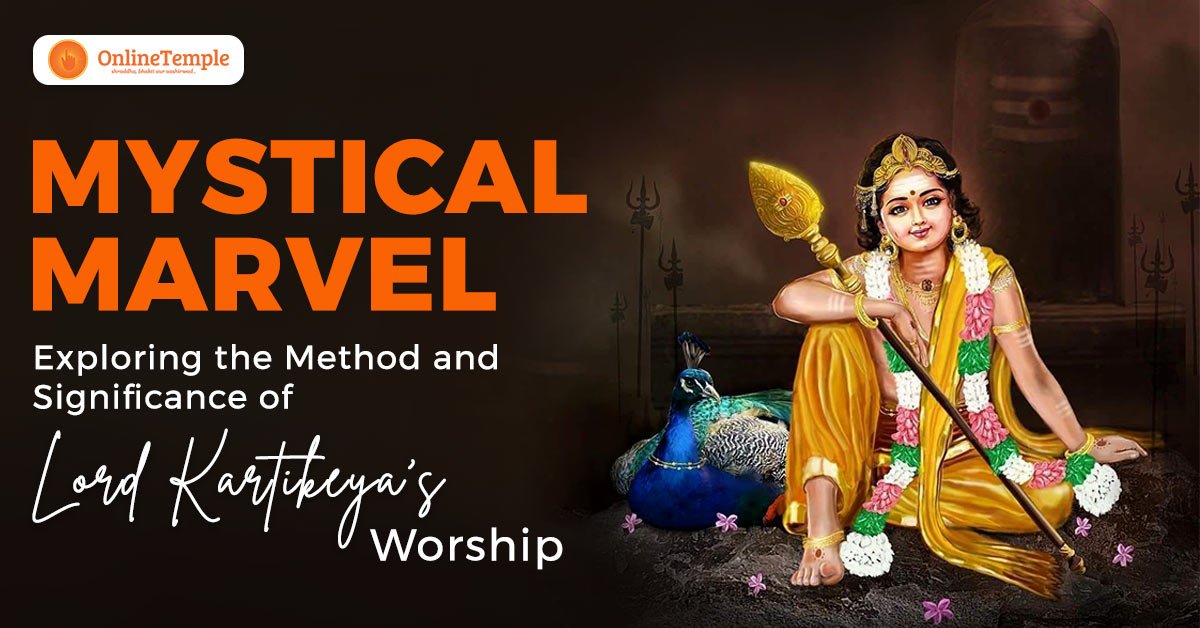Worship of Lord Kartikeya: He is also called Kuman, Seyon, Saravaṇa, Guhan, Murugan, Dandapani, Shanmugam, Subrahmanya, and many other names. He was born to slay the Asuras and is the eldest son of Lord Shiva and the goddess Parvati. According to legend, Lord Shiva bestowed upon Tarakasura and Surapadma the ability to only be killed by him. As a result, the asura gained invincibility and attacked devas, enslaving them. Lord Shiva scowled and released six sparks from his third eye upon hearing this. The six heads of Lord Kartikeya correspond to the six sparks. The six heads of Lord Kartikeya stand for the following six qualities: strength, wealth, fame, quietness, wisdom, and divine power. Lord Kartikeya is one of the famous Hindu deities. He also preferred Murugan, Subrahmanya, and Skanda. You should now explore the online Hindu Puja Service to gain a new perspective on Hindu tradition and custom.
Different Names of Lord Kartikeya
Arumugam, Kumaran, Guruhuha, Velan, Shadanana, Shantakumar, Senthil, Guha, and Sanmukha are some of the names people refer to Lord Kartikeya. These names represent various facets and attributes connected to him. Lord Kartikeya, also known as Thamizh Kaduvul or the “God of Tamils,” is highly revered by the Tamil people.
Symbolism
The iconography of Lord Kartikeya vividly depicts his essence as a warrior deity. His connection to a peacock, which acts as his vahana, or mount, is among the most notable features of his iconography. The peacock, which stands for grace, beauty, and tenacity, illustrates Lord Kartikeya’s capacity to handle difficult circumstances with composure and elegance.
The mount that Lord Kartikeya chose has symbolic meaning. The peacock, with its eye-catching and colorful plumage, is a symbol of pride and ego submission. It reminds his followers to rise above these attributes to achieve spiritual development and overcome both internal and external challenges.
Furthermore, vels, or spears, are frequently shown as being held by Lord Kartikeya. The vel is a formidable weapon that represents his skill in battle and his capacity to defeat evil and negativity. The vel symbolizes focus, acuity, and the ability to overcome challenges in the pursuit of righteousness. In some depictions, serpents are seen encircling Lord Kartikeya. His control over Kundalini’s energy, which stands for spiritual awakening and transformation, is symbolized by these serpents. It highlights his function in guiding and guarding people on their path to spiritual enlightenment. Lord Kartikeya is also portrayed with many faces, typically six, signifying his complexity and capacity to exist in multiple realms at once.
Lord Murugan in Literature
Numerous Hindu epics, Puranic texts, and Vedic literature have accounts of the birth of Lord Kartikeya. His origins are intricately explained in the Mahabharata, where it is mentioned that Svaha and Agni created him to vanquish the demon Mahisha Asura. Lord Shiva appointed Lord Kartikeya as Commander-in-Chief of the Devas’ Army, and he was later recognized by Lord Indra. Devasena is the daughter of Lord Indra and his divine consort.
According to the Vedas, Lord Kartikeya is thought to be the fire deity Agni’s son. The Satapatha Brahmana identifies him. He is Agni’s ninth manifestation and Rudra’s son. Lord Kartikeya, also called Skanda, is described in the Chandogya Upanishad as a path that leads to wisdom. Other scriptures, such as the Baudhayana Dharmasutra and the Taittiriya Aranyaka, refer to Lord Kartikeya and his significance. You can go to our website Onlinetemple.com and book an online pandit for puja and follow all the Hindu traditions and customs.
Worship and Temples for Lord Kartikeya
It takes devotion to worship Kartikeya. It’s a very straightforward arrangement. You will require a stick of incense, camphor, sandal paste, kumkum, Ganges holy water, or any clean water. You first meditate in front of the idol while lighting a lamp and an incense stick. Chant the mantra, sprinkle holy water, offer the deity sandal paste, chant the mantra, and then offer kumkum once you feel your mind is clear of all other thoughts. You can now execute Archana. This can be done as a daily puja. Present the goddess with fruits and flowers while maintaining the camphor fire. Tuesday is considered a lucky day to worship Lord Kartikeya and is dedicated to the war god Mars in India.
During Bengal’s Durga Puja festival, people worship Lord Kartikeya, who is also felt in the area during the month of Kartikeya itself. Bengalis follow unusual traditions, like putting statues or hidden pictures of Lord Kartikeya in homes welcoming a new son.
Temples dedicated to Lord Kartikeya can be found all over Southern India. He is included in the renowned Arupadaiveedu temples. Hinduism’s warrior god “Lord Kartikeya” stands for bravery, strength, and heavenly protection. His worship and devotion are deeply ingrained in the cultural and religious practices of Southern India and elsewhere. Devotees hope to obtain courage, victory, and spiritual development by paying homage to Lord Kartikeya. You can go to our website Onlinetemple.com and buy online puja kit and follow all the Hindu traditions and customs.
Also Read: Lord Tirupati Balaji: A Fascinating Journey Through Myth and Devotion

